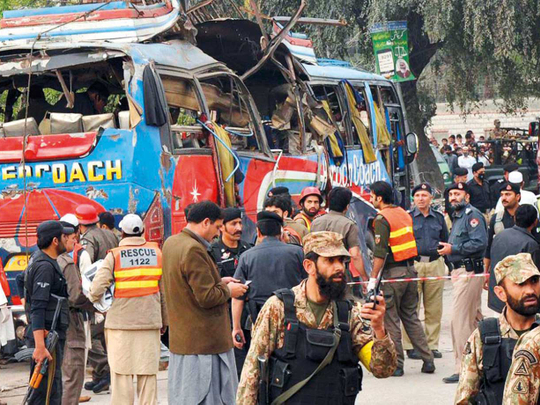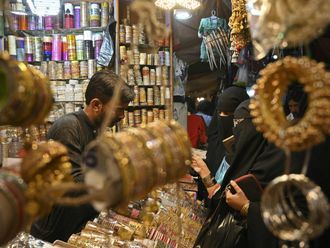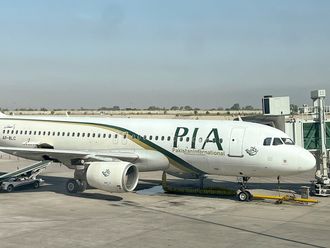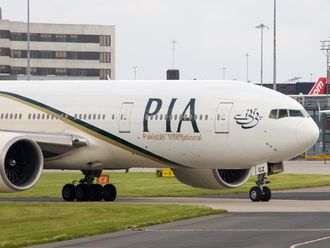
Islamabad
US president Donald Trump’s notice to Pakistan effectively warning the country to instantly cleanse its territory of militant groups active in Afghanistan, creates yet another dilemma for Islamabad’s policymakers.
But president Trump’s failure to understand one of the world’s most complex battlegrounds where Washington’s political, economic and security related stakes are high, has also been badly exposed.
For years, successive Pakistani governments have repeatedly refuted western claims that it is harbouring hardcore militants, notably members of the ‘Haqqani’ group, who routinely attack Afghan and US targets in Afghanistan, only to return to the relative safety of Pakistani territory just across the border. The truth between the claims and counter-claims may well lie somewhere in the middle.
The ‘Haqqani’ group carries its name from its founding father, Maulvi Jalaluddin Haqqani, one of Afghanistan’s seven dissident commanders backed by the US in the 1980s, to combat thousands of well-armed and abundantly trained troops from the former Soviet Union. In 1989, when former Soviet leader Mikhail Gorbachev proclaimed an end to the ‘bleeding wound of Afghanistan’ and withdrew his battered forces after a decade-long and largely futile invasion, the victory of men like Haqqani was widely celebrated in western capitals, including Washington.
But in later years, the demon created by the US in Afghanistan with thousands of well-armed and well-trained fighters with no new war to fight, came to haunt the world. And Washington’s abandonment of the country after the Soviets left, created one of the world’s most dangerous conditions ever — a state where well-armed mafias ruled freely without control of a sufficiently effective central authority. The gap was filled by Al Qaida and Osama Bin Laden — reputed to finance Afghanistan’s annual budget during the Taliban rule.
As Afghanistan earlier became a graveyard for Soviet forces, ironically the same fate was met by US-led western forces following the invasion of Afghanistan after the New York terrorist attacks of 2001 known as 9/11. After a 15 year combat mission which at one time involved upwards of 150,000 US-led western forces, and with a massive bill of more than $700 billion (Dh2.57 trillion) accumulated just for Washington, Trump is the third US president who is trying to solve the Afghan riddle.
Even if Pakistan was to cleanse its territory of all the militant factions present on its soil — a clean up which is long overdue in Islamabad’s own interest — the muddle which surrounds Afghanistan will hardly be solved. Consequently, it is hard to define Trump’s so-called policy speech as anything more than ill-conceived, without vision and above all without a much-required understanding of Afghan history. Simply put its just very naive.
There are two important elements to the circumstances at hand.
First, Trump’s presidency must qualify as the most divisive internally for the US as far as memory serves. That essentially as the given, its also a presidency that neither has the capacity nor the imagination to reach out to build badly needed consensus within or outside the US.
Second, to make the Afghan project finally succeed, the military track as put forth by Trump must follow a radical improvement in building consensus within Afghanistan in partnership with Afghanistan’s key neighbours. Notably Pakistan and Iran, the two countries which share long borders with Afghanistan, must become key players in this process backed by central Asian former Soviet states, notably those which border Afghanistan. Other more distant powers such as Russia, China and India must also become involved as partners in this process. And while the military option must not be abandoned till the ongoing insurgency in Afghanistan continues to rage, the risk from a further intensification of the Afghan conflict must be well understood.
A surge in US troops and pouring in more military hardware for Afghan forces will hardly change the fundamental dynamics of Afghanistan. Roughly half of Afghanistan’s territory has already fallen in the hands of the Taliban while the central government in Kabul of president Ashraf Gani is burdened by ailments ranging from widespread corruption, inefficiency and the failure to build an effective security framework.
Judging by the mood across the Trump presidency, the tragedy is simply that the US president appears heading towards much greater muscle flexing. In times to come, Pakistan may witness an escalation in Washington’s aggressive behaviour, notably the use of more attacks by CIA operated drones, to target suspected militant sanctuaries within the country’s borders. For the US however, the risk is obvious; more bloodshed and prospects for victory becoming even more remote in Afghanistan.












